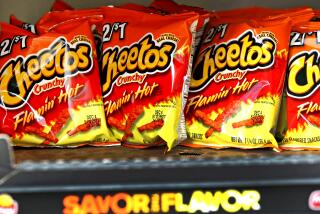Who needs a car? Smartphones are driving teens’ social lives
Given a choice between a new Toyota Corolla or the latest iPhone, 16-year-old Allison Katz of Irvine says that’s an easy one.
She’d take the phone.
Texting drives her social life. She doesn’t have a driver’s license and hasn’t rushed to get one.
“I mostly stay near my house except for soccer practice, and then Mom or Dad drives,” Allison said.
It’s enough to keep an auto executive awake at night.
Thirty years ago, nearly half of 16-year-olds had a driver’s license, their passport to independence. By 2010 that figure had dropped to 28%, according to research from the University of Michigan.
The cultural shift is largely the result of technology that keeps teens connected to one another and the coolest new stuff without ever getting into a car. All the adolescent staples — music, movies, clothes, books — are available with a mouse click or smartphone swipe.
Driving once allowed teens “to go where you want, do what you want, see who you want and, in some sense, be who you want,” said Lindsey Kirchoff, 23, of marketing software company HubSpot and a millennial trend marketing consultant. “The Internet has made the freedom that comes with a license anticlimactic.”
Getting a driver’s license has also gotten a lot tougher. For starters, today’s teens are more pressed for time than their parents were. Stiff competition for college admissions means prep courses, SAT tutoring, team sports and other activities to buff up college resumes.
Meanwhile, driver’s education classes, once a staple in U.S. high schools, have fallen victim to budget cuts, making it harder for kids to get the training.
California is particularly tough. The state requires those under 18 to spend 50 hours behind the wheel with an adult older than 25 before taking the driver’s test. And even those who pass face restrictions that severely crimp their social lives. Licensed drivers younger than 18 can’t drive their friends around unless accompanied by a parent or guardian. They also can’t drive between 11 p.m. and 5 a.m.
“The rules turn teens away,” said Jessica Gonzalez, a spokeswoman for the state Department of Motor Vehicles.
This generation’s waning interest in driving has serious long-term consequences for automotive sales and marketing. Before selling young buyers on any particular model — say, a Honda Civic versus a Chevrolet Cruze — automakers have to convince them that they need a car at all.
Drivers ages 15 to 20 accounted for 3.4% of new-car sales in 1985, or about 500,000 vehicles, according to CNW Research, an automotive market research firm. That dropped to 2% last year, or just 300,000 vehicles.
The implications for automakers go deeper than a few lost or delayed sales to young drivers. Many of today’s teenagers won’t form the same emotional attachment to driving as their parents, who aspired to luxury or performance cars as status symbols.
Many teens without licenses say they will eventually learn to drive. But they won’t have “parked” up in the Hollywood Hills or along Newport Coast. In-N-Out Burger will be walk-up rather than drive-through. They won’t make formative memories in cars or develop a passion for driving.
Status now comes from gigabits instead of horsepower, from the newest iPad with Retina display rather than a BMW.
This generation probably will buy fewer cars over their lifetime than their parents, concedes Jack Hollis, who heads marketing for the Toyota car brand in the U.S. That’s a function of competing interests, increased auto durability and recession-honed pragmatism.
Nearly three-quarters of millennials, ages 18 to 34, would rather shop online than in stores, according to a December survey by Zipcar, the hourly car-rental company. Given the choice of losing their phone or computer or their car, 65% would go without their car.
“This is the Xbox generation,” said Scott Griffith, Zipcar’s chief executive. “They manage their social lives as easily on the information highway as we did on the paved highway.”
Some young people shun driving because it interferes with their texting, said Michael Sivak, research professor at the University of Michigan’s Transportation Research Institute.
Christian Kerr, a junior at Long Beach Polytechnic High School in Long Beach who does not drive, said, “Generally I tend to socialize through social media — Facebook — and text messaging.”
Christian spends time with his friends at school and at track practice.
“On the weekends, I bike or I carpool,” he said. “Getting a license just isn’t a priority.”
Allison, a student at Northwood High School in Irvine, recently watched the hit movie “The Avengers” on a 52-inch Samsung 3-D television at home rather than hitting a multiplex. When she goes out with friends, they walk to the local shopping center and have lunch.
The trend holds for older teens. In 1983, 69% of 17-year-olds had licenses, compared with 46% in 2010; for 18-year-olds, the percentage declined from 80% in 1983 to 61% in 2010.
“I know a lot of people who are waiting until they are 18,” said 18-year-old Cat Blumberg, who hopes to pass her driver’s test this month. “If I had a job, I would feel more motivated to get my license.”
For the last two years, the Los Alamitos High School senior has been carted around by her parents, friends with licenses and even her 16-year-old brother, Johnny, who did get his license.
Parents have mixed feelings about teens’ lack of driving ambition.
“It’s scary to see your child get behind the wheel,” said Kim Blumberg, Cat’s mother. “But it will be a good thing for her. She is getting older; she will need to find a job and get that freedom and independence.”
The sooner the better for automakers, who fret as young adults pick Apples over Altimas.
“The automakers are very worried,” Zipcar’s Griffith said.
Part of the auto industry’s problem comes down to simple math. “A smartphone and the bill could be $100 a month. That’s a good portion of a car payment,” said Cristi Landy, Chevrolet’s director of small-car marketing.
The auto industry could help itself by better integrating technology into its cars, Toyota’s Hollis said.
“The auto industry has not pushed itself with technology and design at the same speed as the rest of society,” he said. “You would be hard-pressed to say that any automotive company has out-innovated its competition.”
But fun-to-drive cars with dynamic styling can capture young buyers, Hollis said. Toyota kept that in mind when it redesigned its flagship Camry sedan, he said. Now 12% of Camry buyers are younger than 29, up from 7% for the previous model.
Ford Motor Co. is trying to recapture young buyers on college campuses by subsidizing rental rates for its vehicles available through car-sharing services such as Zipcar.
“Once these students have been exposed to Ford products, they will be more likely to consider buying them,” said Sheryl Connelly, Ford’s manager of global trends and futuring.
Chevrolet is marketing to younger buyers by focusing on their shifting priorities, Landy said. “In the past, it was all about horsepower and torque, and now it is about technology, connecting to smartphones and fuel efficiency.”
Chevy’s Spark and Sonic small cars offer MyLink radio, which enables drivers to purchase a $50 BringGo smartphone app to display a navigation program and traffic updates. The system mimics an embedded navigation system — at a fraction of the cost — and also syncs with other apps such as Pandora and Stitcher music services.
Chevrolet also is working on a “mirror link” feature that would display any app deemed safe for driving on a dashboard screen.
All of this will help. But what the automakers really need, Griffith said, is “an iPhone with wheels.”







